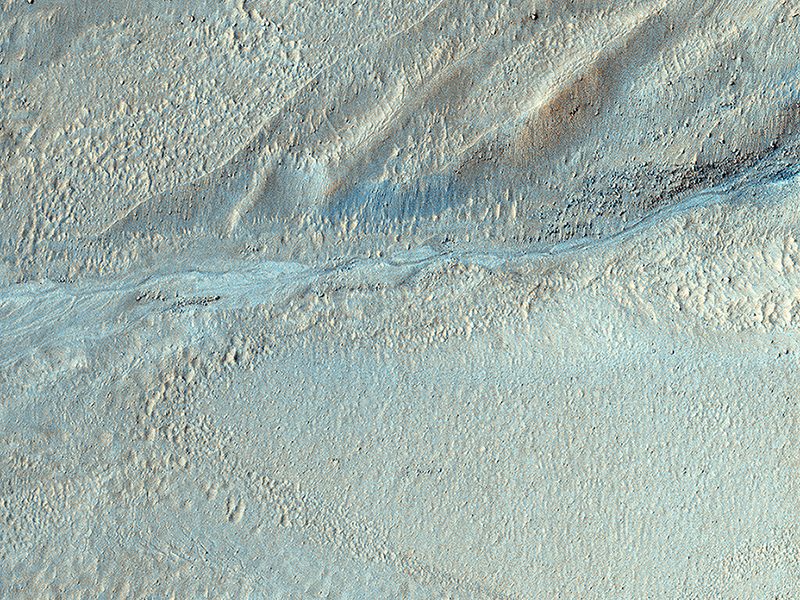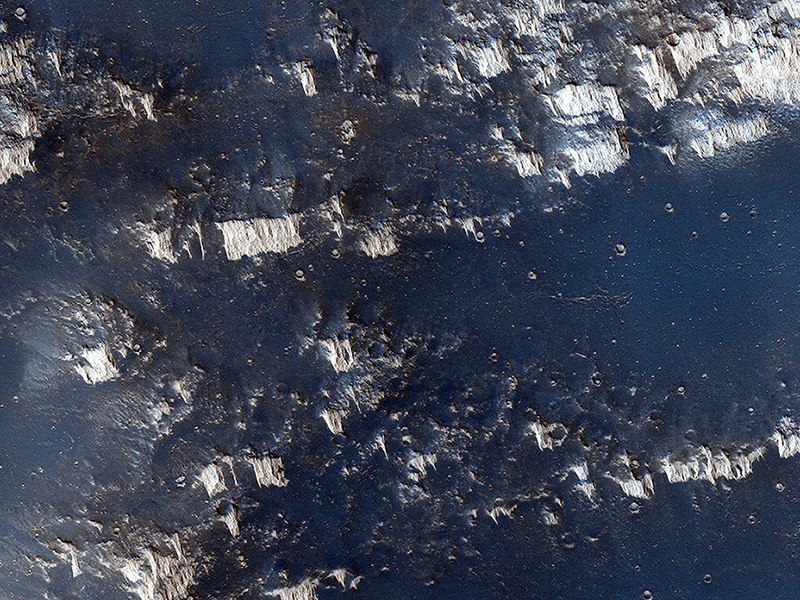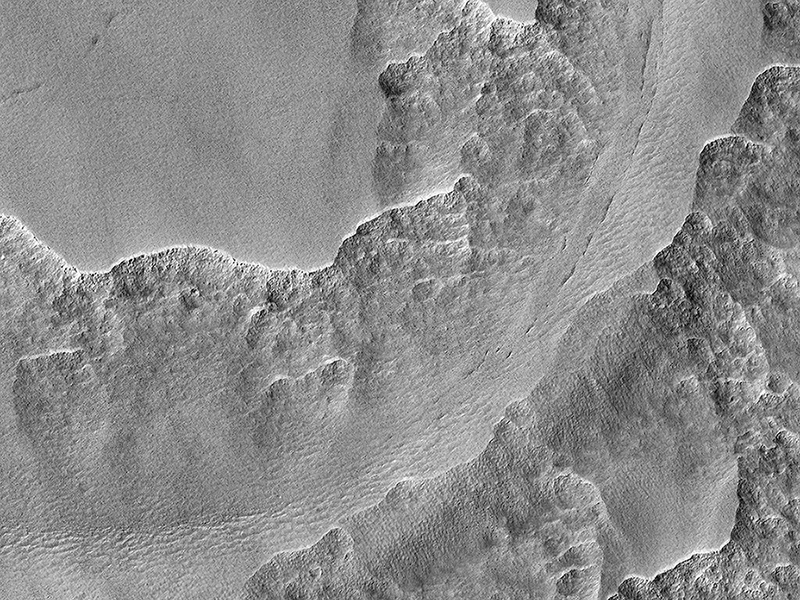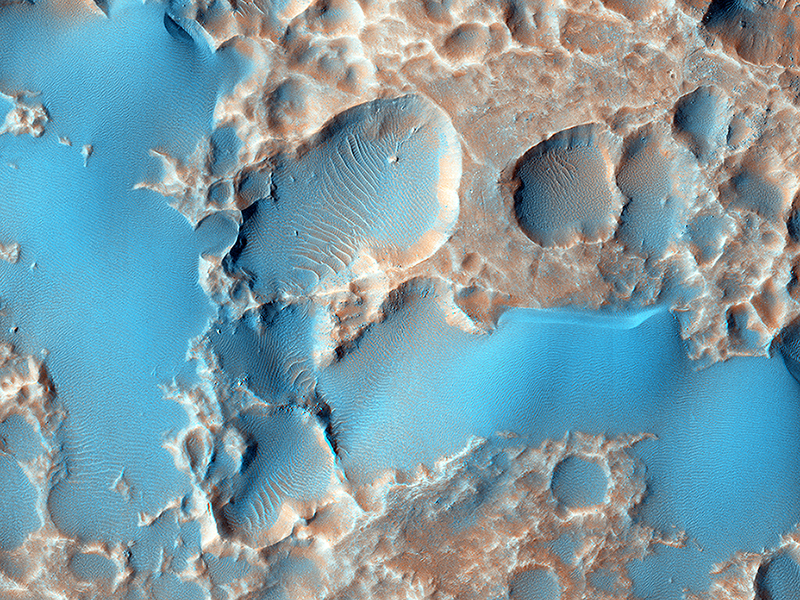HiRISE Science Team wrote:Gullies Old and New Near the Argyre Region (ESP_038931_1355) (HiClip)
As gullies form on slopes, sediment can become deposited to form lobe-shaped fans. Gullies can form with flowing water, but don't have to: sometimes they can be formed by the dry flow of sand and dust grains. This HiRISE image shows several seemingly active gullies and their associated fans.
These particular gullies have many fine channels that are resolved nicely with a high resolution image.
HiRISE Science Team wrote:Higher Terrain between Sinai and Solis Plana (ESP_038932_1635) (HiClip)
The terrain in this observation looks like an ancient uplifted crustal block. The area is riddled with faults (big cracks that allow rocks to slide) and ridges that look like uncovered magma dikes.
A Mars Orbital Camera picture shows the region to be moderately dusty, but rocks do poke out along the ridges. With a high resolution images, we want to know if the dikes are of the same composition as the flood lavas that surround this high terrain. And what material did the dikes intrude upon which can be eroded away?
HiRISE Science Team wrote:Filled Crater and Scallops (ESP_038967_1230) (HiClip)
In this observation made for a study of ancient craters, we see the craters filled with smooth material that has subsequently degraded into scallops. These formations might be possibly due to ground ice sublimation.
High resolution can help to estimate any differences in roughness on the smoother main mantle and in the eroded hollows. With the enhanced color swath, we might be able to view composition variations of the material.
Kirby Runyon wrote:Pits in Hale Crater Ejecta (ESP_039524_1445) (HiClip)
The pits visible here aren’t impact craters. The material they’re embedded into is ejecta (stuff thrown out of an impact crater when it forms) from a large crater called Hale which is not seen in this image.
Substances called “volatiles“—which can explode as gases when they’re quickly warmed by the immense heat of an impact—exploded out of the ejecta and caused these pits. Unrelated sand dunes near the top of the image have since blown over portions of the pits.
Credit: NASA/JPL/University of Arizona
<< Previous HiRISE Update



